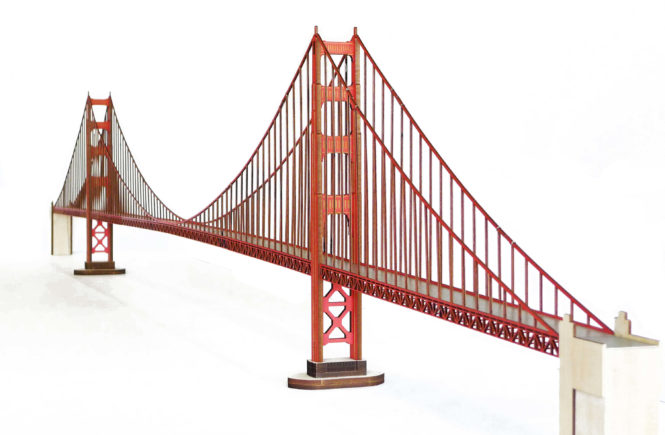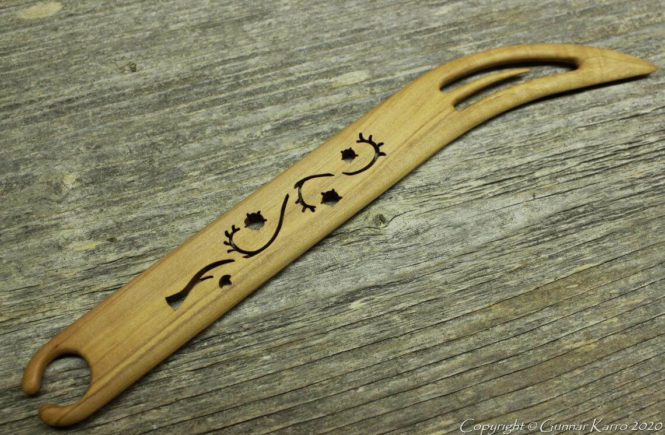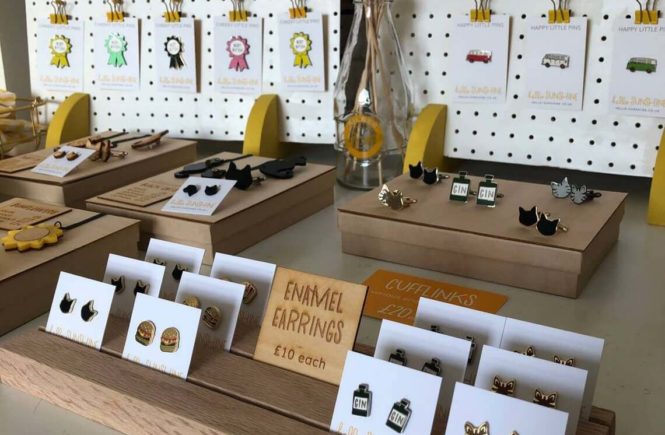[vc_row][vc_column][vc_message bb_tab_container=””]
Niche : Personalized Design
Shop link : https://www.etsy.com/shop/MetropolitanCraft
Instagram : https://www.instagram.com/metropolitancraft
[/vc_message][/vc_column][/vc_row][vc_row][vc_column][vc_column_text]
Tell us something about yourself, how did you get started, do you consider yourself a crafter,maker,artist…
I grew up making models and art pieces in my basement workshop as a kid. My parents encouraged me to take art classes, and I ended up studying architecture at RISD ( Rhode Island School of Design). I worked at Architecture firms in various cities before landing in San Francisco, where I became very interested in model making again, as a professional model builder for architects. I enjoyed the manual skill of building something perfectly, using tools, software, very creatively. I would first consider myself a designer because I have a strong opinion about all kinds of design! But I am an artist, an architect, and a woodworker.
How did you discover Etsy? Did you have any previous experience in selling handmade products? Why did you start selling online?
Etsy seemed like a natural fit for my business ( Studio for Metropolitan Craft) because it was the go-to marketplace for makers. The templates and everything was very streamlined for online sales. So it was easy to set it up rather quickly and plug in my products to build a store. I’m not very sophisticated with building websites, so having the templates really helped me create an online store, allowing me to focus on my craft. Etsy also has a built-in community, and ad campaigns which I benefit from.
What products do you sell, what type of materials are used in your creations, how do you design your products, what makes your products stand out ?
We sell laser cut model kits, and tabletop sculptures of iconic structures. Bridges, towers, buildings. I started with the Bay Area structures series: Sutro Tower, Golden Gate Bridge, Oakland Cranes, TransAmerica Pyramid. The SFMOMA and other museum stores picked up my model kits, where they became really popular. I do a lot of laser cutting, and 3D printing, woodworking, using plywood, aluminum, cardboard, and other materials. And I do all my packaging myself too.
My designs go through a few phases before they are ready to be products. I start with hand-built sketch models to get the right scale and size. I do research on the structures and measurements. The design gets further developed in the computer to streamline the production process and minimize labor. But I am mostly aware of keeping the highest quality through each step. I try not to compromise on details, proportions, or any other element, staying true to the actual structures, and developing clever woodworking details to make them easy to assemble. I think that is what people appreciate. All the models are precise to scale and fun to build. They are interactive in a sense that you build them, creating a fun memory and accomplishment.
How was your experience in learning to craft, are you self-taught or did you have a mentor, how long did it take for you to be satisfied with your creations
I developed most of my skills over the years as a professional model builder, woodworker, and draftsman. Using sophisticated CNC technology to take computer drawings to machine cutting. That took years to master, but ultimately I got to a point where I could do it creatively. It took many years of persistence and learning– trial and error. I also had a few good teachers, mentors along the way, and I never gave up because it was too hard. Although there were many points when I wanted to!
[/vc_column_text][/vc_column][/vc_row][vc_row][vc_column width=”1/3″][vc_single_image image=”100000423″ img_size=”737×737″ onclick=”link_image” css_animation=”appear” bb_tab_container=””][/vc_column][vc_column width=”1/3″][vc_single_image image=”100000424″ img_size=”737×737″ onclick=”link_image” css_animation=”appear” bb_tab_container=””][/vc_column][vc_column width=”1/3″][vc_single_image image=”100000425″ img_size=”737×737″ onclick=”link_image” css_animation=”appear” bb_tab_container=””][/vc_column][/vc_row][vc_row][vc_column][vc_column_text]
Did you have any fears or reservations before opening up your Etsy shop? Were you worried about profitability or product competitiveness? What are some concerns and questions you had before you got started? How did you overcome them?
My main concern was to make everything look very crisp and professional. That included good photography, well edited text, and things like that. I invested in a good camera, and lighting, and photoshop, so I could get crisp images.
How long did it take for you to get your first sale? Did you ever thought you would make a lot of sales in the first year? What was a goal you were hoping for? How many sales an average you get per week?
My sales took off rather quickly, and unexpectedly in the beginning years. That led to other jobs too, custom work, and large production orders for corporate gifts.
Do you have a job outside Etsy? If not, are you able to commit full-time to online selling? How does your typical day look like? How do you manage time?
Yes, I have a job outside of Etsy. I still make models for architecture projects, and do drafting and custom projects for clients. Generally I work from 2 places- my studio office, and a shared makerspace in San Francisco called HumanMade.
How does your manufacturing process looks like for e.g. your best selling product? Do you create products ahead of the orders? Do you customize your products, if so how? What are tools that you are using in manufacturing process?
Once a design is developed, the CAD files are basically infinitely repeatable. So there is a period of time to develop the CAD drawings initially. But once it is developed mainly the time goes into pure production mode. Production usually includes obtaining the right wood, preparing it for laser cutting. monitoring the laser while it’s cutting. Cleaning and sorting the parts. Doing printed materials, and packaging.
What is the biggest impact on profitability of your shop? How expensive are the materials you use? How do you price your products?
My products are under-priced because it’s hard to compete with mass-manufactured goods. Basically the profitability covers the production, and not much more than that. Good quality materials are expensive. Good equipment and space to work in is expensive too. But it is still worth it in order to get the larger commissions and establish a quality reputation for my work. I generally wholesale to retail stores, so I get half of the store price paid to me. The more I can sell directly to customers, the better my profits, because I don’t split the price with the store.
What inspires you when you’re creating? How do you get ideas for new products? What are some methods or tools you use to get creative?
I can be inspired by almost any sort of design challenge. But my series of models has a natural path of iconic structures… which are numerous! I’m also challenged by public design competitions, calls for entry, art gallery shows and themes, and conversations with friends, and customers!
Do you ship your product internationally? How do you handle postage pricing? What is average time it takes from the order to the delivery? Do you use free shipping? If so, why? How do you package your products?
Yes, I ship nationally and internationally. Many of my kits are flat-packed and fit in standardized envelopes to reduce cost. For larger pieces, I’ve custom-built wood crates with foam interiors for long-distance shipping. I sometimes offer free shipping codes to my customers as an incentive to make a purchase. I always make sure to get a tracking number for the customer, in case there’s a question about arrival.
[/vc_column_text][/vc_column][/vc_row][vc_row][vc_column width=”1/3″][vc_single_image image=”100000426″ img_size=”737×737″ onclick=”link_image” css_animation=”appear” bb_tab_container=””][/vc_column][vc_column width=”1/3″][vc_single_image image=”100000427″ img_size=”737×737″ onclick=”link_image” css_animation=”appear” bb_tab_container=””][/vc_column][vc_column width=”1/3″][vc_single_image image=”100000428″ img_size=”737×737″ onclick=”link_image” css_animation=”appear” bb_tab_container=””][/vc_column][/vc_row][vc_row][vc_column][vc_column_text]
Are you worried about competitors? Does it impact your business in any way? If there are a lot of similar products, how do you make your own stand out?
First of all, I try to leverage my quality, and creativity to make my work stand out. My years of design skills and talent sets my work apart. But I also copyright my work with the Library of Congress. That requires a photo, and one page description. In return you get a number and an official record of the originality of your work. It’s not a patent, but a copyright can cover some creative content. I’ve used my copyrights in the past to defend my work against people who steal and copy. It’s very important to defend your work in any and every way possible. Also being first to market is a huge advantage– so I keep all my projects “top secret” until I feel they are ready to reveal. If you are first with a particular product, act quickly to get into stores, and be vigilantly on the lookout for copyright breakers if you want to protect your work.
How do you deal with disputes or bad rating/feedback? How do you manage presale and post sale communication and customer satisfaction?
I haven’t had many disputes. A couple 4 star reviews, with a majority of 5 star. I generally treat every customer with great attention, as much attention and quality as I put into my craft. A good reputation is essential! Generally customers are also very flexible once they understand that I will do everything possible to make things right. Etsy has customer reviews, comments, ratings. It’s entirely voluntary, so I’m really pleased so many folks have written in to share their positive reviews.
Has selling on Etsy changed your life in any way? If so, how? Did you ever thought you would get this far with your shop? Have you ever been stressed dealing with customers and manufacturing products? How did you deal with that?
Etsy has been a great online presence for me, and a good platform for sales. So I’m happy with Etsy. They’ve also promoted my work, and featured it in some collaborations. It’s a good supplement to my retail store sales. Stress is a natural part of owning a business. I generally know my limits and capability, so I try not to over-promise, or take jobs which I can’t successfully manage.
How important is social media for your shop? What are some common tactics you use to promote your products? Do you spend money on ads outside of Etsy? How do you generate excitement/hype around your products?
I have a company instagram account, and a facebook business account. Neither of them has driven any significant sales for me. They are mostly a way for me to keep a record of what I do, stay in touch with friends, and maybe connect with similar craftsmen/ artists. So social media plays a very small role for my business.
What are some things you did to set your shop for success on Etsy? What is one lesson you learned the hard way?
I took very good photographs on white backgrounds. The photos are very important.
What piece of advice would you give to new or established sellers or those considering to sell on Etsy? How can they avoid beginners mistakes?
I think it’s important to have at least 3-4 listings, to show. I usually have 9-12 products.
[/vc_column_text][/vc_column][/vc_row]



